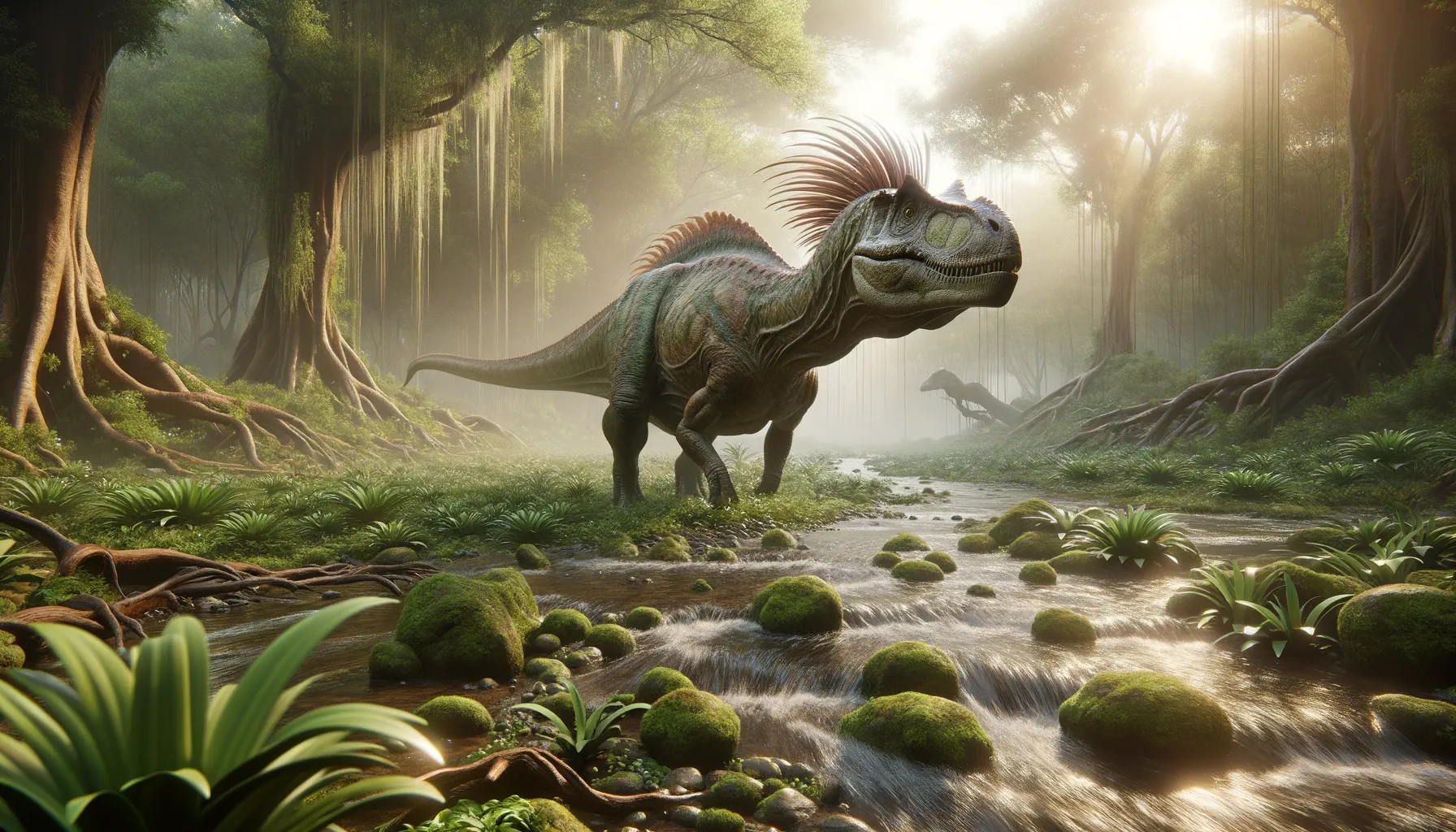
Brachylophosaurus
The gentle giant of the Cretaceous era.
Period
Cretaceous
Length
Reached lengths of around 30 feet (9 meters).
Height
Stood about 13 feet (4 meters) tall.
Weight
Weighed up to 8,800 lbs (4,000 kg).
Brachylophosaurus was a fascinating herbivorous dinosaur known for its unique flat-headed crest and its social nature. Living during the Late Cretaceous period, it inhabited the lush floodplains of what is now North America. Its herbivorous diet consisted mainly of plants, which it efficiently processed with its advanced dental structure. Brachylophosaurus remains have provided valuable insights into dinosaurian growth patterns and social behaviors.
Diet
Brachylophosaurus primarily ate plants. Its diet included ferns, conifers, and flowering plants, which it could chew effectively due to its specialized teeth.
Hunting
As a herbivore, Brachylophosaurus did not hunt. It foraged for food in groups to ensure safety from predators.
Environmental challenges
Brachylophosaurus faced challenges such as seasonal changes in plant availability and climate fluctuations. Predation from large carnivorous dinosaurs was a constant threat. They also had to compete with other herbivores for food resources. Natural disasters like floods could dramatically affect their habitats.
Speed
It moved at a moderate pace for a herbivore.
Lifespan
Estimated to be around 20 to 30 years.
First discovery
Discovered in 1953 in Montana, USA.
Fun Facts
- Brachylophosaurus is known for its unique flat, paddle-like crest on its head.
- It lived approximately 77 million years ago during the Late Cretaceous period.
- Brachylophosaurus was a herbivore, meaning it likely fed on leaves, plants, and stems.
- It was discovered in North America, with fossils found mostly in present-day Montana, USA.
- Scientists believe Brachylophosaurus could move both on two legs and all four, depending on its activity.
- This dinosaur is sometimes affectionately referred to as 'Brachy' by paleontologists due to its long name.
- Brachylophosaurus had cheeks, which helped it hold food while chewing – a rare feature among dinosaurs!
Growth and Development
Brachylophosaurus grew steadily from hatchling to adult, experiencing rapid growth during juvenile stages. This growth was facilitated by a bone structure that allowed for continuous growth throughout their lives. Fossil evidence suggests social behaviors played a role in survival and growth, with young individuals learning from the herd.
Habitat
They thrived in floodplain environments where rivers and wetlands provided abundant plant life. This habitat offered a diverse range of foliage to feed on. The warm, moist climate was ideal for sustaining large herds. Seasonal migrations may have occurred in search of fresh vegetation.
Interaction with other species
Brachylophosaurus likely coexisted with a variety of other dinosaurs, both herbivores and carnivores. Their social nature may have helped in detecting predators like Tyrannosaurus. Despite their size, defensive strategies were vital for survival. Fossils suggest they were part of complex ecosystems, sharing environments with a range of species.
Natural lifespan
Brachylophosaurus could live between 20 to 30 years naturally.
Reproduction
Reproduction likely involved laying eggs in nests built on the ground. Parental care might have been present, as seen in other hadrosaurids. Fossil evidence suggests communal nesting sites. Hatchlings were born small and rapidly grew to join the herd.
Social behaviour
Social behavior was a key aspect of Brachylophosaurus life, possibly forming herds for protection. Communication through vocalizations or visual displays might have been common. This behavior ensured mutual vigilance and safety from predators. Young individuals learned survival tactics within these social groups.
Fossil locations
Fossils have been predominantly found in Montana, USA. Notable sites include the Judith River Formation. Additional remains have been discovered in Alberta, Canada. These discoveries have contributed significantly to understanding hadrosaurid dinosaurs.
